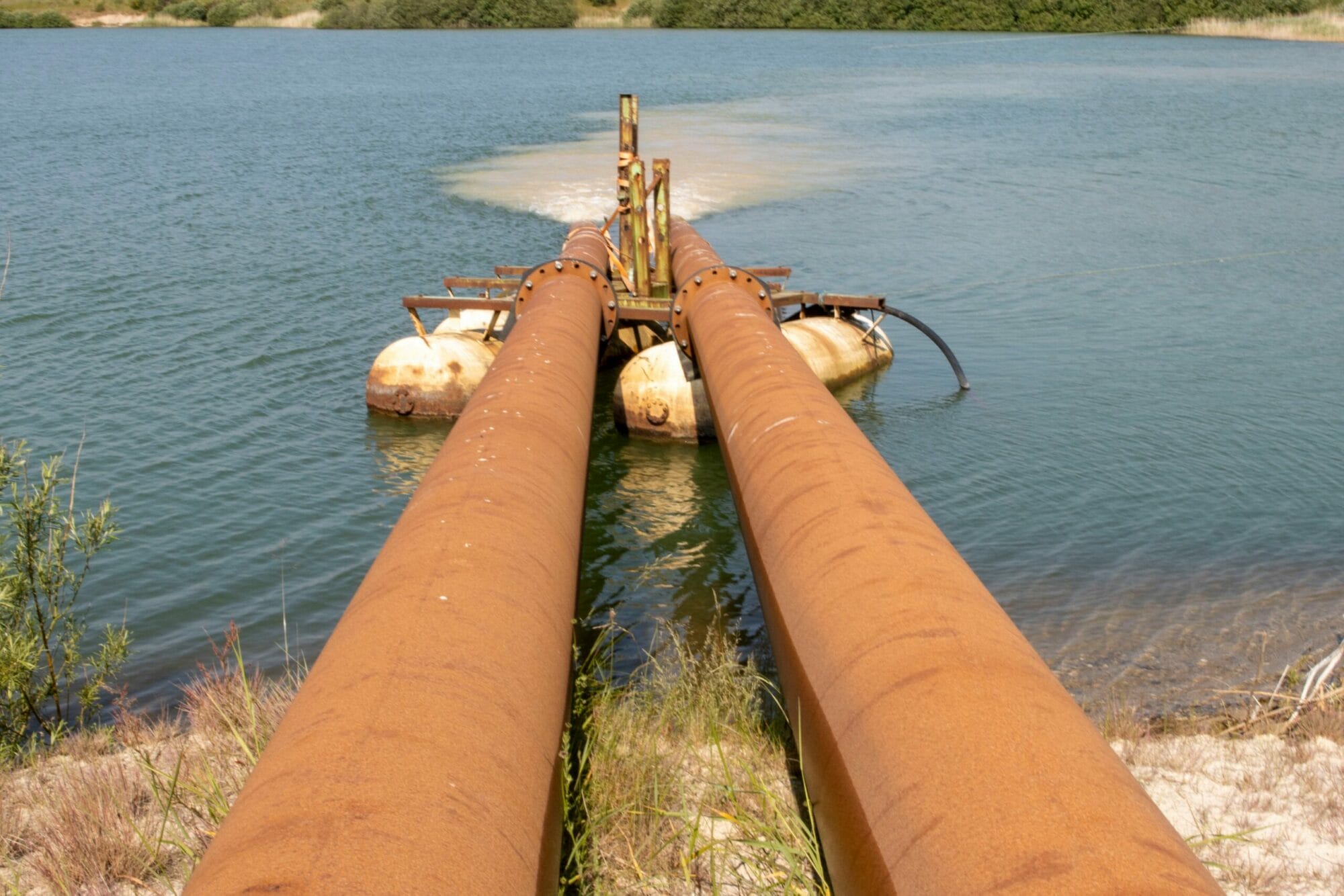Groundwater gravel pit
Brendon Derr
Arizona Center for Investigative Reporting
In 2022, when the southeastern Arizona community of Willcox confronted state regulations that would’ve halted new groundwater irrigation in the largely agricultural area, voters and special interest groups mobilized to defeat the ballot measure by almost two to one.
They acknowledged that, as in other rural areas of the state, more groundwater was being pumped out of the Willcox Basin than was naturally refilled, and they agreed something should be done about that overdrafting.
But bringing the area under the state’s existing rules, as the measure proposed to do, wouldn’t give the rural community enough control to guide development in a way that differed from more urban areas like Phoenix or Tucson.
Meanwhile, as petitions circulated and public meetings convened around Willcox, those who could afford it submitted proposals to drill more. Applications for new irrigation wells in the Willcox Basin nearly tripled over the year prior, with some proposing wells nearly twice as deep and with more pumping capacity than is normal for the area, according to an AZCIR analysis of application data from the Arizona Department of Water Resources.
Similar scenarios have played out across the state in recent years alongside growing calls for new regulation: When local conversations about groundwater regulation take place, a surge of well applications follows.
The Douglas Basin, for instance, which in 2022 had a similar vote to bring the region’s unregulated areas under existing state regulations, had more applications that year than any since the last major groundwater legislation was passed in the 1980s.
And in 2019, when the Mohave County West Basin Water Users Study Committee was formed after the area near Kingman saw out-of-state operations start large, corporate-owned farms, applications ticked up in the Hualapai Valley basin as well.
“The minute that anybody gets wind of (regulation), they’re gonna go pull permits,” said La Paz County Supervisor Holly Irwin, who saw the same scenario play out in the western Arizona county’s rural areas. “The panic of: ‘Oh my god, here comes regulation. We better hurry up and get our permits now.’”
Since taking office in January, Gov. Katie Hobbs has placed a renewed focus on the state’s lack of rural groundwater regulation, revamping a council of stakeholders who recently put forward policy recommendations in an attempt to break a yearslong legislative stalemate. But with the October departure of the state’s largest farming lobby and state Sen. Sine Kerr from the council, experts contend most of those recommendations have little chance of making their way through the Legislature.
Local farmers, government officials and water experts worry that further delay in legislation will allow larger farms, which already dominate local conversations about regulation in rural areas, to continue drilling additional wells. The tactic, which existing regulations allow, lets those with enough resources expand their share of groundwater before any future regulation bars expansion in areas facing overdraft.
Even a handful of these deeper wells with higher capacity pumps can extract so much water from the surrounding basin that shallower ones can no longer reach the aquifer at all, cutting off smaller farms and homes from their water supply. A state study of the Willcox Basin released in December shows that the average well is no longer deep enough to reach the water table.
Philip Bashaw, CEO of the Arizona Farm Bureau—the group that left the governor’s water council—said the organization wants to solve the problem in an incremental way that avoids what he called negative economic consequences, especially for those who rely on groundwater in the most threatened basins.
“We didn’t get here overnight, and we’re not going to resolve the issue overnight, unless we wanted to create economic destruction,” he said, adding that even metering requirements can end up being burdensome. Such measures become “a nonstarter for the agriculture community,” because they always end up leading to mandatory reductions in water usage, he said.
For those in rural areas already in overdraft, like within Cochise and Mohave counties, though, a reduction in usage is precisely the point.
“It has to be a framework that’s going to allow for conservation measures to actually work,” said Mohave County Supervisor Travis Lingenfelter. “You can’t come in and say, ’We’re using this much water right now, and we always want to use this much water, and we’re just going to make everybody else conserve whatever needs to be conserved.’ That makes the whole framework fail.”
The 1980 Groundwater Management Act, which still governs groundwater usage in Arizona, gave the state two primary regulatory tools: the Active Management Area, which has a slate of conservation requirements but was originally designed for more populous areas like Phoenix and Tucson, and the Irrigation Non-expansion Area, which limits new irrigation in areas imminently threatened by overdrafting.
These tools have been broadly effective in slowing groundwater depletion for regulated areas, even as the state’s population has more than doubled since their enactment. But they don’t easily translate to, and were never intended for, rural communities that want to prioritize agriculture over municipal growth. After four decades and a series of failed legislative efforts, the state’s rural groundwater basins remain largely unregulated.
And a key metric that would let the state apply existing regulations to rural areas seeking them—the extent of groundwater overdraft—is nearly impossible to know, because the Arizona Department of Water Resources hasn’t been able to collect enough data. In response to the Great Recession, Arizona leaders further hampered the state’s ability to make informed decisions by more than halving the agency’s staffing budget.
Though the Legislature recently gave the department money to conduct new, simplified studies of the state’s 51 basins, Attorney General Kris Mayes accused the department of failing to carry out the more robust hydrogeologic studies that could help prompt state regulation. The department has disputed Mayes’ claim, saying it has consistently fulfilled its ‘statutory duty.’
An area can vote on whether to establish an Active Management Area directly, as Willcox did, but the bar for state-initiated regulation is much higher. The department’s interpretation of current law doesn’t let the agency consider projected water use to halt new irrigation in an area, which further limits its ability to establish regulatory areas, according to Sarah Porter, Director of the Kyl Center for Water Policy.
In other words, a basin must already be in trouble before the state can regulate it.
“And once you have that problem,” Porter said, “it’s really hard to put the genie back in the bottle.”
Frustrated by the state’s inaction, and fearing another rush for access to groundwater from large farms like those that moved into his area in 2015, Mohave County Supervisor Lingenfelter worked with the U.S. Geological Survey to collect the data necessary to prove his area was in need of an Irrigation Non-expansion Area.
Although the regulation allows existing groundwater pumping to remain as is, it effectively preserves the unsustainable situation that put the aquifer in danger in the first place. It also means those who have proactively engaged in water-saving measures are locked in at that rate, whereas those using less efficient irrigation methods will be able to do so indefinitely.
The imperfect solution was a bitter pill for local Mohave County farmers, but it stopped additional irrigation and a worsening of the groundwater deficit, at least for now. Out-of-state investment firms behind larger farms in the area are attempting to undo the regulation in court, calling the state’s determination for regulating the basin “arbitrary and capricious” and an “abuse of discretion.”
Micah Spencer, a Hualapai Valley farmer in Mohave County who favored the regulation, said he is frustrated that he must now put future plans for his farm on hold.
“It’s kind of like we’re getting punished for, essentially, the state not taking care of the situation before it got out of hand,” Spencer said. “Because now I can’t expand where we’re at, and I’m only five acres, but I’m treated like a corporate farm that has 5,000 acres.”
Lingenfelter, like Spencer, would prefer a more flexible set of rules that prioritizes local control and the needs of rural communities. But a pair of lawmakers has stymied multiple attempts to establish local groundwater boards to manage groundwater, he said.
State Rep. Gail Griffin, R-Hereford, and Sen. Sine Kerr, R-Buckeye, have repeatedly used their positions as legislative committee chairs to act as “gatekeepers” for the interests of large farms, blocking former Republican state Rep. Regina Cobb’s Rural Management Area bill since 2020.
“They haven’t had to come in and try to work something out, because they know that any bill that we’ve introduced is just gonna die,” Lingenfelter said, adding that he and officials from a coalition of other counties, including La Paz, have invited the lawmakers to discussions each year.
Neither Griffin nor Kerr responded to requests for comment.
After voters rejected the 2022 ballot measure to establish an Active Management Area in Willcox, residents and local leaders started working on regulation that would effectively commodify water in the basin.
The effort—spearheaded by County Supervisor Peggy Judd, who was recently indicted for interference with an election officer and conspiracy during the 2020 election—was inspired by the management of the Edwards aquifer in Texas, where water rights can be bought, sold and leased.
Part of the appeal for Cochise County farmers is the ability to keep control local.
Willcox isn’t asking the state to just give them another tool, as is being proposed by the governor’s rural groundwater committee, Judd said. “We’re asking for authority to see what we can do in our own valley, with our own people, and our own water, which we own. Because it’s our land.”
This solution favors the idea that one owns the groundwater under their property, a notion contradicted by current law. The precedent, an ideological flashpoint, has been largely disregarded by strong private property advocates like Griffin and the Arizona Farm Bureau.
“They’re trying to perpetuate this belief that there’s this private property right when it comes to groundwater, and that’s simply not the case,” said Lingenfelter, adding that treating groundwater as private property is “absolutely contrary” to equitable conservation and doesn’t incentivize large corporate farms to come to the table.
The longer it takes to break through legislative gridlock, experts say, the more opportunity the largest and well-financed farms will have to increase their access to groundwater—exacerbating the overdraft any future regulation will need to address and boxing out smaller farms and residents from groundwater as shallower wells continue to dry up.
If legislation stalls in familiar ways in 2024, Hobbs could use the state’s water department to declare the most threatened areas of the state under existing regulations—the ones widely seen as overbearing and ill-fitted for the job.
“Rural Arizona shouldn’t be deprived of water security and reliability,” the governor’s office said via email, adding that “the status quo is not an option, and we will not continue down an unsustainable path.”








